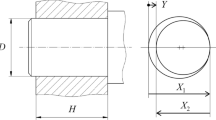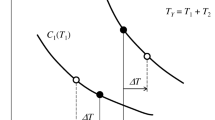Abstract
Many tolerance allocation methods based primarily on cost optimisation have been developed in recent years. However, the dimensions of the assembly parts are usually determined by convenience or design constraints other than the requirements of the assembly itself. The dimensions are often determined to give sufficient clearance during assembly without much consideration given to their tolerances. This is usually followed by a tolerance analysis to check for interference. The dimensions are then adjusted to eliminate any interferences. There is no control over the size of the clearance of an assembly.
This paper presents a new approach of dimensioning the components of an assembly which would allow real control over the size of clearance or interference in an assembly. A unique algorithm in conjunction with a relationship matrix is developed to formulate the dimensions in a tolerance chain into a linear equation. This linear equation is then used to develop the tolerance analysis module. The dimensioning module is accomplished using a separate algorithm in conjunction with the linear equation established. The tolerance analysis and the dimensioning modules are subsequently tested on a number of examples.
Similar content being viewed by others
References
R. T. Scott and G. A. Gabriele, “Computer aided tolerance analysis of parts and assemblies”,15th Design Automation Conference, ASME 19-1(1), pp. 29–36, 1989.
W.-J. Lee and T. C. Woo, “Optimum selection of discrete tolerances”,Journal of Mechanisms, Transmissions, and Automation in Design 111(2), pp. 243–251, 1989.
Z. Wu, W. H. Elmaraghy and H. A. Elmaraghy, “Evaluation of cost-tolerance algorithms for design tolerance analysis and synthesis”,Manufacturing Review 1(3), pp. 168–179, 1988.
B. K. A. Ngoi and C. T. Ong, “Computer aided process dimensioning”,IA '92 Conference, Singapore, 1992.
B. K. A. Ngoi and C. T. Ong, “A complete tolerance charting system”,The International Journal of Production Research, 31(2), pp. 453–470.
O. Bjorke,Computer Aided Tolerancing Tapir Publishers, Trondheim, Norway, 1978.
Author information
Authors and Affiliations
Rights and permissions
About this article
Cite this article
Ngoi, B.K.A., Ong, C.T. Optimum assembly using a component dimensioning method. Int J Adv Manuf Technol 11, 172–178 (1996). https://doi.org/10.1007/BF01351322
Issue Date:
DOI: https://doi.org/10.1007/BF01351322




